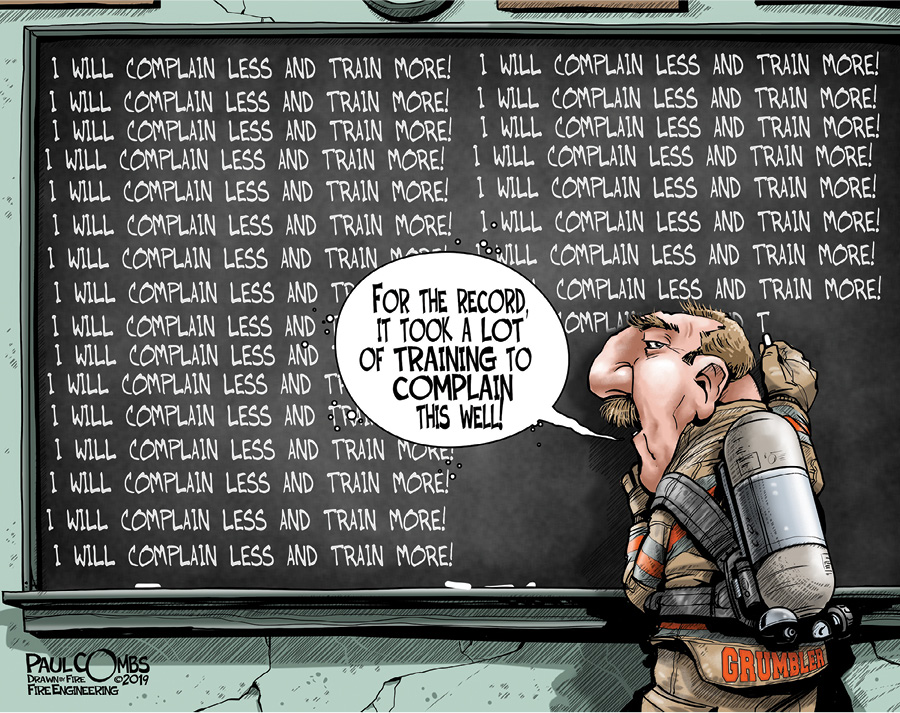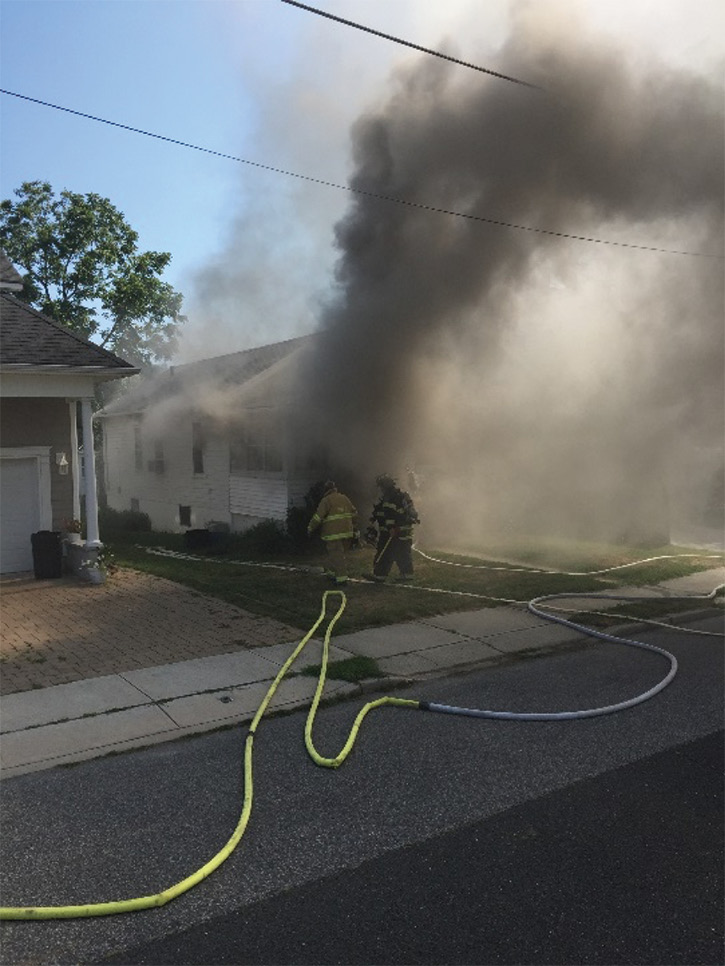
Letters to the Editor
The Salty Firefighter
As firefighters or people in general, we can all recall someone with whom we were forced to work who created a toxic environment for all. It made you wonder, “What possibly could have given this person such a bad attitude toward the job, coworkers, and maybe even friends and family?”
Dealing with the public, we have an obligation to act in a professional manner. Those who call on us are having one of the worst days of their lives, and tensions are high. Sometimes, firefighters lose that sense of professionalism when they return to the firehouse or, even worse, while interacting with the public, portraying that they don’t care or they, too, are having the worst day of their lives. What causes such a poor attitude? These firefighters have the potential to be or may already be outstanding people, but their poor attitude puts a stain on their name and what they have to say.
Often, it’s much easier to recollect negative rather than positive interactions we’ve had with people. Bad attitudes can stem from someone’s feeling of not being treated well, receiving an order with which they did not agree from a superior officer, or personal issues such as financial troubles or trying to overcome an addiction. Unless we walk a mile in their shoes or they discuss their shortfalls with us, we won’t be able to set up a pathway to correct the attitude.
As firefighters, we have an obligation to help our brothers and sisters. Don’t let personal bias get in the way of helping someone, especially if the person is looking for help. Some employers offer employee assistance programs (EAPs) to help firefighters and their immediate family members cope with the stresses of our jobs. Maybe our brother or sister has had a few bad calls and needs to destress; sometimes a listening ear is all that is needed. Our job is not to judge but to help make a bad situation better. Name calling, arguing, and going back and forth won’t help the situation. They create more problems and make us look petty and childish.
The takeaway is that we’re all human, many of us are fighting our own battles, and asking for help is one of the most difficult things for most of us to do—right up there with apologizing. If you see a firefighter who has a bad attitude, sit down and have a talk about what you’re seeing; chances are that he is well aware of it. If the negative attitude is related to an underlying issue, it may be advantageous to reach out to your department’s EAP; this way, the firefighter will have access to professional help. Sometimes also just hearing someone tell us, “Good job,” is enough to help us keep going.
“Where is your moral compass leading you?”
The fire service was founded on key words that have deep meaning and are instilled in our training and upbringing: Integrity, Pride, and Bravery. These three words carry many obligations. The public that entrusts you with everything they own and love on their worst day expects you to follow through on the oath you took to protect and serve them. You will be handed the keys to their homes, and mothers will hand off their babies because they know you will do everything you can to save their lives.
Today’s firefighter is being held accountable now more than ever—for every action, failure to act, word spoken, and social media post. I have been a firefighter since 1994, and the times have changed incredibly since the day I took the oath. In the past 10 years, things have changed at warp speed: We are seeing and reading about firefighters involved in countless discrepancies and unlawful acts— driving under the influence, domestic violence, arson, and the list goes on. I understand that firefighters are human. My purpose in writing this letter is to remind members of the fire service that every decision we make affects so many others. The media expect more from us and hold our feet to the fire when we slip.
We have to see the big picture in a world that has gotten smaller with social media and instant information at our fingertips. We must slow down and do a size-up and a 360° walk-around for each decision we make. We must remember that when we make one bad choice or decision, we are Firefighter Smith—the firefighter from the locality we serve and from the fire service as a whole. It’s something to think about: You are me, and I am you. We are family.
Before we post that rant or personal feeling, before we hit the “enter” key, we should ask, “Will this make firefighters look bad or shed a negative light on the fire service?” Social media is a great avenue for positive uplifting topics, training ideas, and general information; but, many times, it is abused and made a platform for an agenda that may not be healthy or positive.
With technology comes great responsibility, but it brings also conveniences; smartphones with applications at your fingertips and Uber and Lyft are just a couple of examples that come to mind. On the other hand, the smartphone can get you in deep water. One irrational moment of putting your fingers in motion without thinking things through can cost you dearly. A screenshot of that statement or post is instant and forever! So, we need to review and understand our departments’ social media policies.
Where has your moral compass led you, and where will it lead you in the future? You entered the fire service wanting to make a difference in your community and in someone’s life. Be the positive you want to see: Exercise selflessness and serve your community. Never forget why you took that oath. Keep the words “integrity” and “pride” close to your heart and set the example. Now is your chance to be that firefighter you looked up to. Be an example of true brotherhood: Carry on the tradition of the fire service, be dedicated, and have the backs of your fellow firefighters by keeping the reputation of the fire service in a positive light. We have the highest public rating of all public safety entities; this reputation was built on the backs of our brothers and sisters of the past. Our responsibility is to keep that tradition alive.
Vertical ventilation
I have observed on Facebook and YouTube helmet cam videos of firefighters ventilating peaked roofs, some of which have one hole already open and venting heavy fire, that the firefighters are trying to extend the opening. When the fire is too intense for the saw and it chokes out, they then leave the roof. This scenario is becoming a common occurrence on social media and is being praised as “aggressive truck work.”
Is this aggressive or just dangerous and old-style tactics? I remember 15 years ago that the plan was to stretch a line and open the roof. Now, testing and outcomes have told us to control the door, outside vent, and flow path.
My question is, why are we putting ourselves in danger to vent peaked roofs when we could commit the personnel to stretching the initial line and opening ceilings? There is a time and place when we need to open the roof, a skill that needs to be practiced; however, we need to think more tactically when sending members to the roof.
Instead of the first engine splitting a crew and sending members to the roof or the first truck company going to the roof, we need to commit to aggressively stretching the initial line, getting to the seat of the fire, and opening ceilings. There is no need to put ourselves in danger on a roof prior to applying water and opening the ceilings.
Let us talk about an attic fire. This is a time when companies say the roof needs to be opened. I do not disagree with this, but the primary tactic should not be to get the roof open. The primary, most important tasks should be to get a line inside and attack the fire. How do we do this? Commit the firefighters needed to properly stretch a line inside and open the ceilings! If you have smoke pushing from the eaves and roof and you open the roof prior to pulling ceilings and applying water, you run the risk of making the situation worse. If the smoke and gases light up, you now have to open up the ceilings and hope you can get water on the fire before you have a fire that involves the roof’s structural members. Once you apply water and open the interior, if you still have high heat and smoke, then you can open the roof to get relief.

Photo by John A. Sahatjian.
The above photo is of the rear of a one-story residence with a fire that got up into the attic space. If the roof had been ventilated before the ceilings were pulled and water was applied, there would have been the potential to feed oxygen to the fire in the attic and have it light off. Our priority in this fire needs to be stretching the initial line and opening the ceilings. One more thing to remember is that when we decide we need to ventilate the roof, once fire or heavy smoke vents out of the hole, get off the roof. Your job is done.

For more news visit: www.fireengineering.com
Originally ran in Volume 172, Issue 7.

